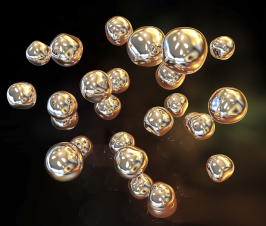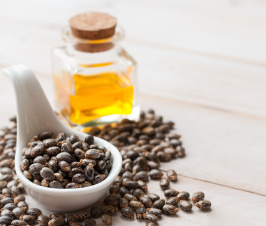Dr. Sarah LoBisco, ND
@DrLoBisco
Living In a Critter-Ridden World
As if we don’t have enough to worry about with “Living In a Chemical Soup World,” in 2013 the CDC (Center for Disease Control and Prevention) issued a 114-page report, “Antibiotic Resistance Threats in the United States, 2013,” listing 18 superbugs classified as “urgent, serious and concerning threats” to humankind. In its forward, the Director of the U.S. Centers for Disease and Prevention stated the following distressing news:1-3
Antimicrobial resistance is one of our most serious health threats. Infections from resistant bacteria are now too common, and some pathogens have even become resistant to multiple types or classes of antibiotics (antimicrobials used to treat bacterial infections).
The loss of effective antibiotics will undermine our ability to fight infectious diseases and manage the infectious complications common in vulnerable patients undergoing chemotherapy for cancer, dialysis for renal failure, and surgery, especially organ transplantation, for which the ability to treat secondary infections is crucial.
When first-line and then second-line antibiotic treatment options are limited by resistance or are unavailable, healthcare providers are forced to use antibiotics that may be more toxic to the patient and frequently more expensive and less effective.
Among the “winners” of resistant and threatening critters were:
- Carbapenem-resistant Enterobacteriaceae (CRE)
- Drug-resistant Neisseria gonorrhoeae
- Multidrug-resistant Acinetobacter
- Drug-resistant Campylobacter
- Fluconazole-resistant Candida (a fungus)
- Extended spectrum beta-lactamase producing Enterobacteriaceae (ESBLs)
- Vancomycin-resistant Enterococcus (VRE)
- Multidrug-resistant Pseudomonas aeruginosa
- Drug-resistant Non-typhoidal Salmonella and Salmonella Typhi
- Drug-resistant Shigella
- Clostridium Difficile (C. Diff)
- Methicillin-resistant and Vancomycin-resistant Staphylococcus Aureus (MRSA and VRSA)
- Drug-resistant Streptococcus pneumonia
- Drug-resistant tuberculosis
- Erythromycin-resistant Group A and Clindamycin-resistant Group B Streptococcus1,3
Approximately 2 million people in the United States acquire serious infections with bacteria resistant to one or more of the antibiotics designed to treat them. At least 23,000 people die each year as a direct result of this. Additionally, many more suffer from complications resulting from these antibiotic-resistant infections.1-3
Does this mean those unfortunate critter hosts should be subjected to the more toxic prescription alternatives that the CDC director indicated?1
The Many Constituents & Actions of Essential Oils
Essential oils (EOs) are plant secondary metabolites (such as polyphenols, phenylproponoids, terpenoids, ect) which are important for plants’ survival and contribute to their immune defense. They can also help to support humans’ immunity.4-7 EOs have a complex chemistry containing many constituents4-8 that can be classified as either terpenoids or phenylpropanoids, or alternatively classified as hydrocarbons and oxygenated compounds. According to The Therapeutic Benefits of Essential Oils, Nutrition, Well-Being, and Health, the major volatile constituents in these oils include:
… hydrocarbons (e.g., pinene, limonene, bisabolene), alcohols (e.g., linalol, santalol), acids (e.g., benzoic acid, geranic acid), aldehydes (e.g., citral), cyclic aldehydes (e.g., cuminal), ketones (e.g., camphor), lactones (e.g., bergaptene), phenols (e.g., eugenol), phenolic ethers (e.g., anethole), oxides (e.g., 1,8 cineole) and esters (e.g., geranyl acetate) (Deans, 1992).8
Due to the fact that so many constituents are contained within one drop of an essential oil, they tend to be very balancing to the human body through synergistic actions.6-8
Essential Oils & Microbe Inhibition
Many essential oils have demonstrated inhibition activity against various microbes.9-11 The mechanisms behind the action of how essential oils inhibit microbes are still under investigation, and various pathways have been elucidated due to the variety of components within different essential oils.4-8, 10 Several studies have associated their actions to the generation of irreversible damage to the membrane of bacterial cells. This leads the bacteria to “leak out its contents” with resultant death. Other proposed mechanisms include inhibition of toxin producing enzymes, protein degeneration, and interference with cellular respiration and electron flow in the unfortunate bacteria.7,8,10
Several studies have demonstrated essential oils may offer an alternative in inhibiting resistant superbugs in vitro and in small human trials.12-19 Furthermore, they may also prevent resistance when used in conjunction with antibiotics and through their action of inhibiting biofilm formation.20-28 For example, in a study with six different chemotypes (variations in predominant constituents) of oregano, in vitro activity against Staphylococcus aureus strains and Psuedomonas aeruginosawas demonstrated. These essential oil species also showed inhibition of new biofilm formations from food spoilage organisms.27 Furthermore, another in vitro study demonstrated carvacrol, an active constituent in oregano, to also have action against biofilm formation of microbes.
Important Consideration When Choosing Essential Oils
In the United States, there are many misconceptions on the quality of essential oils and disagreements from various schools of aromatherapy on their use and applications for various wellness regimens. Stay tuned for my next posts on the subject of “Essential Oils and Safety” and “Can I Eat This Oil? Why Quality Counts”.
Sarah Lobisco, ND, is a graduate of the University of Bridgeport’s College of Naturopathic Medicine (UBCNM). She is licensed in Vermont as a naturopathic doctor and holds a Bachelor of Psychology from State University of New York at Geneseo. Dr. LoBisco is a speaker on integrative health, has several publications, and is a certification candidate in functional medicine. Currently, she is the Director of Clinical Education for an esteemed nutraceutical company.
References:
- Center for Disease Control and Prevention. (CDC). Antibiotic Resistance Threats in the US, 2013. Available at: http://www.cdc.gov/drugresistance/threat-report-2013/pdf/ar-threats-2013-508.pdf#page=14. Accessed February 9, 2015.
- Center for Disease Control and Prevention (CDC). Antibiotic Resistance Threats in the United States, 2013. July 2014. CDC Web site. http://www.cdc.gov/drugresistance/threat-report-2013/. Accessed February 9, 2015.
- Center for Disease Control and Prevention (CDC). Antibiotic Resistance Threats in the United States, 2013: Biggest Threats. September 2013. CDC Web site. http://www.cdc.gov/drugresistance/biggest_threats.html/. Accessed February 9, 2015.
- Korkina L, Kostyuk V, De Luca C, Pastore S. Plant phenylpropanoids as emerging anti-inflammatory agents. Mini Rev Med Chem. 2011; 11(10):823-35.
- Iason, G. Symposium on ‘Plants as animal foods: a case of catch 22?’: Antimicrobial properties of plant secondary metabolites. Proceedings of the Nutrition Society. 2004; 63: 621–629.
- Essential Oils Desk Reference.4th ed. USA: Essential Science Publishing; 2007.
- Nazzaro F, Fratianni, F, De Martino L, Coppola R, De Feo V. Effect of Essential Oils on Pathogenic Bacteria. Pharmaceuticals. 2013; 6:1451-1474. doi:10.3390/ph6121451
- Djilani, A & Dicko, A. The Therapeutic Benefits of Essential Oils, Nutrition, Well- Being and Health.Dr. Jaouad Bouayed ed. 2012; 165-166.
- Juliani HR, Simon, JE, Ramboatiana MMR, Behra O, Garvey A, Raskin I. Malagasy Aromatic Plants: Essential Oils, Antioxidant, and Antimicrobial Activities. Acta Hort.(ISHS). 2004; 629:77-81. Available at: http://www.actahort.org/books/629/629_9.htm.
- Baudoux, D. Antiviral and Antimicrobial Properties of Essential Oils. Positive Health Online: Aromatherapy. 2000; 55. Available at: http://www.positivehealth.com/article/aromatherapy/antiviral-and-antimicrobial-properties-of-essential-oils. Accessed September 1, 2014.
- Sienkiewicz M, Łysakowska M, Pastuszka M, Bienias W, Kowalczyk E. The Potential of Use Basil and Rosemary Essential Oils As Effective Antibacterial Agents.Molecules. 2013; 18, 9334-9351; doi:10.3390/molecules18089334
- Yap PS, Lim SH, Hu CP, Yiap BC.Combination of essential oils and antibiotics reduce antibiotic resistance in plasmid-conferred multidrug resistant bacteria. Phytomedicine. June 2013;15;20(8-9):710-3. doi: 10.1016/j.phymed.2013.02.013.
- Sue Chao S, Young G, Oberg, C, Nakoka K. Inhibition of methicillin-resistant Staphylococcus aureus (MRSA) by essential oils. Flavour and Fragrance Journal. 2008; 23: 444-449. DOI: 10.1002/ffj.1904
- Nelson, J. Selection of resistance to the essential oil of Melaleuca alternifolia in Staphylococcus aureus. J. Antimicrob Chemother. 2000; 45 (4): 549-550. doi: 10.1093/jac/45.4.549
- Halcón L, Milkus K.Staphylococcus aureus and wounds: a review of tea tree oil as a promising antimicrobial. Am J Infect Control. November 2004;32(7):402-8.
- Edmondson M1, Newall N, Carville K, Smith J, Riley TV, Carson CF. Uncontrolled, open-label, pilot study of tea tree (Melaleuca alternifolia) oil solution in the decolonisation of methicillin-resistant Staphylococcus aureus positive wounds and its influence on wound healing.Int Wound J. August 2011;8(4):375-84. doi: 10.1111/j.1742-481X.2011.00801.x. Epub 2011 May 12.
- Boire NA, Riedel S, Parrish NM. Essential Oils and Future Antibiotics: New Weapons against Emerging ‘Superbugs’? J Anc Dis Prev Rem.2013;1: 105. doi:10.4172/2329-8731.1000105
- Becerril R, Nerín C, Gómez-Lus R. Evaluation of bacterial resistance to essential oils and antibiotics after exposure to oregano and cinnamon essential oils. Foodborne Pathog Dis. 2012; 9(8):699-705. doi: 10.1089/fpd.2011.1097. Epub 2012 Jul 24
- Yap PS, Lim SH, Hu CP, Yiap BC. Combination of essential oils and antibiotics reduce antibiotic resistance in plasmid-conferred multidrug resistant bacteria. Phytomedicine. June 2013; 15;20(8-9):710-3. doi: 10.1016/j.phymed.2013.02.013. Epub 2013 Mar 26.
- Costerton JW1 Stewart PS, Greenberg EP. Bacterial biofilms: a common cause of persistent infections. Science. May 1999; 284(5418):1318-22.
- Costerton JW, Lewandowski Z, Caldwell DE, Korber DR, Lappin-Scott HM. Microbial biofilms. Annu Rev Microbiol. 1995;49:711-45.
- Stewart PS, Costerton JW.Antibiotic resistance of bacteria in biofilms. Lancet. July 2001; 14;358(9276):135-8.
- Donlan RM, Costerton JW. Biofilms: Survival Mechanisms of Clinically Relevant Microorganisms. Clinical Microbiology Reviews. 2002;15(2):167-193. doi:10.1128/CMR.15.2.167-193.2002.
- Bjarnsholt T. The role of bacterial biofilms in chronic infections. APMIS Suppl. May 2013;(136):1-51. doi: 10.1111/apm.12099.
- Batoni G, Maisetta G, Brancatisano FL, Esin S, Campa M. Use of antimicrobial peptides against microbial biofilms: advantages and limits. Curr Med Chem. 2011;18(2):256-79.
- Bahar AA, Ren D. Antimicrobial Peptides. Pharmaceuticals. 2013; 6(12):1543-1575. doi:10.3390/ph6121543.
- Schillaci D, Napoli EM, Cusimano MG, Vitale M, Ruberto A. Origanum vulgare subsp. hirtum essential oil prevented biofilm formation and showed antibacterial activity against planktonic and sessile bacterial cells. J Food Prot. October 2013; 76(10):1747-52.
- Burt SA, Ojo-Fakunle VT, Woertman J, Veldhuizen EJ.The Natural Antimicrobial Carvacrol Inhibits Quorum Sensing in Chromobacterium violaceum and Reduces Bacterial Biofilm Formation at Sub-Lethal Concentrations. PLoS ONE. 2014;9(4):e93414. doi:10.1371/journal.pone.0093414.
* See my websitefor a the full abstracts of studies in compliance with the FDA


















